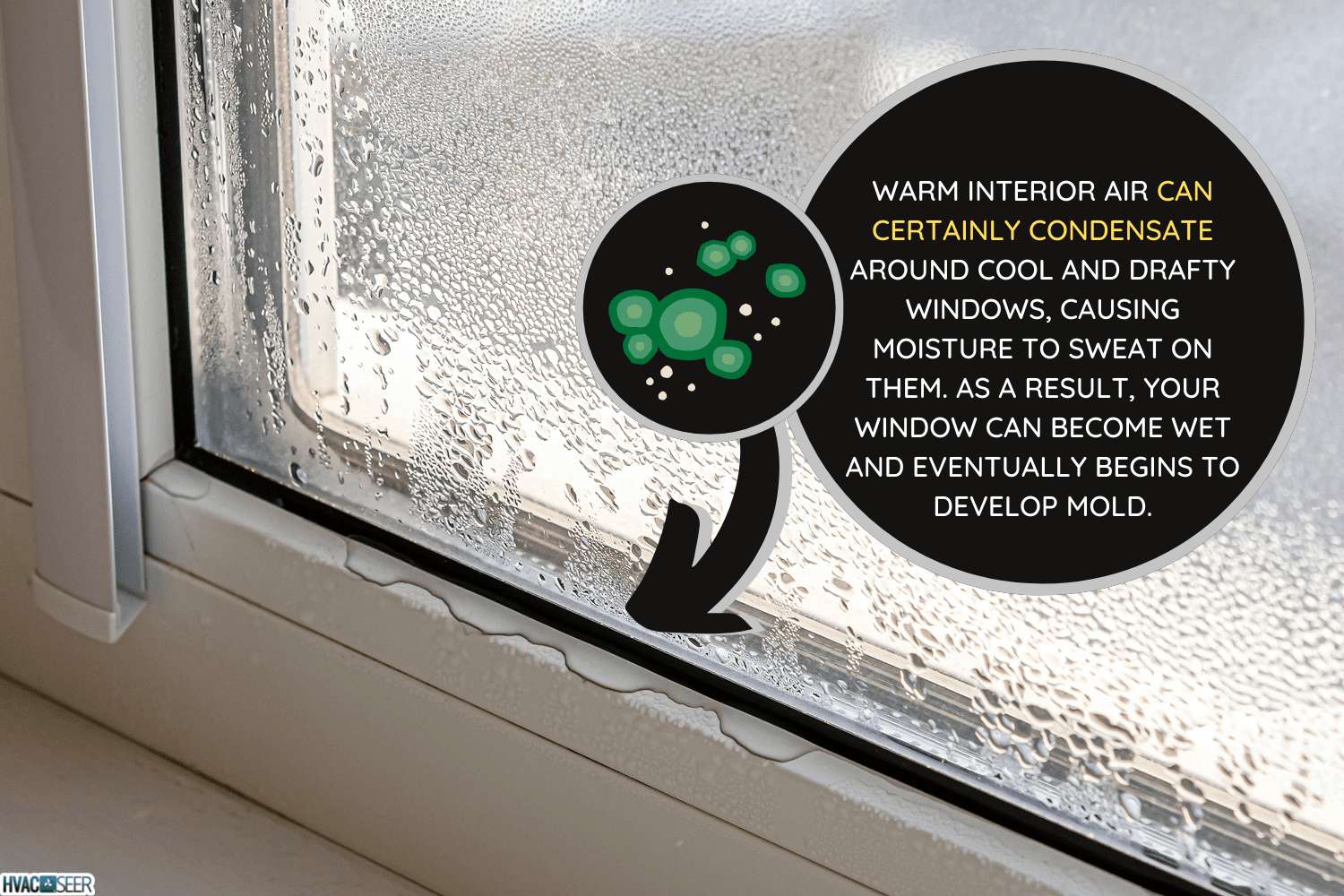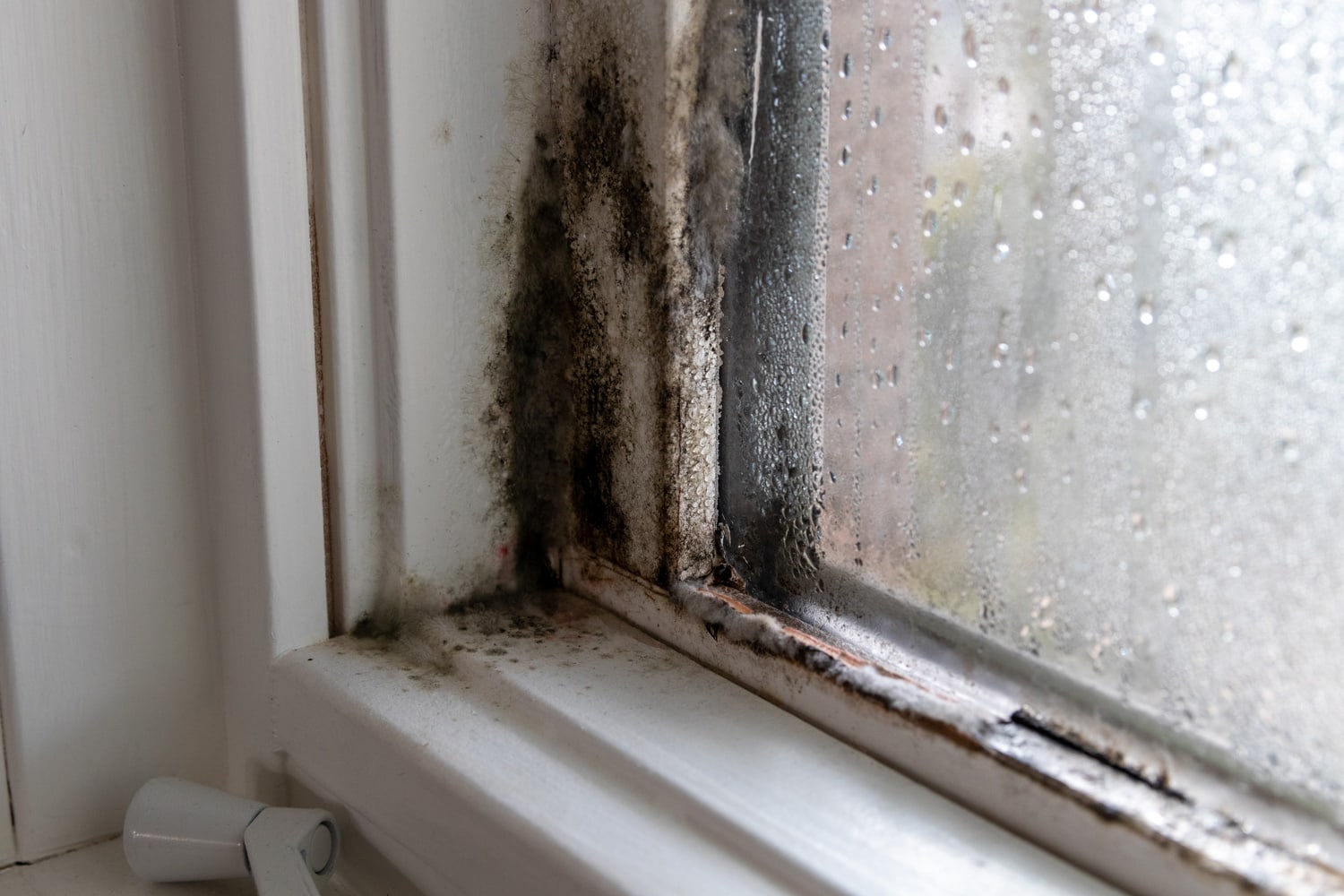Condensation can develop almost in all places, especially during the winter months. However, what concerns you is does the condensation on the window cause mold. Worry no more! We've done extensive research on this matter to bring the answer you need.
Warm interior air can certainly condensate around cool and drafty windows, causing moisture to sweat on them. As a result, your window can become wet and eventually begins to develop mold.
That was easy, was it? Well, don't skip reading, as we will explain the other vital questions in this regard. We will share with you what causes condensation in your window where mold is very rampant. We'll also provide some tips and preventative steps to ensure your house is free from molds. That said, let's start the discussion below!

Is It Bad To Have Condensation On Windows?
Condensation on the inside surface of windows has the potential to influence the concentrations of some indoor air contaminants, having negative effects in some other areas of your home.
For instance, a high humidity level keeps the air moist and raises the risk of mold growth. Condensation caused by humidity on windows or other surfaces also creates a sort of standing water effect. This is exactly where pests, bacteria, and mold can flourish.
What Causes Condensation In A Window?
Condensation builds up when hot, humid air comes into touch with a cold surface. As you know, moisture is everywhere, and humid air may contain more moisture.
Air shrinks and condenses when it cools, releasing its moisture. Since windows are the coldest area in your house, you'll notice condensation accumulation on the windows when the temperature drops.
Indoor air is significantly warmer and may hold more moisture during the colder months than outdoor air. Furthermore, a warm or humid inside air cools and condenses; as it comes into contact with cooler windows, the moisture absorbs into the glass.
How Do I Stop Condensation On My Windows?
Condensation on windows can be highly frustrating and, in certain situations, even cause harm to your house. Excessive condensation on your window could cause its frame or moldings to rot.
Follow us below to know how you stop the condensation issue in your windows:
Proper Ventilation
The laundry area, bathroom, and kitchen are some spaces that are particularly prone to moisture. Turn on your exhaust fans when you're cooking and taking a shower.
Verify that the exhaust fans in those places and the vent for your clothes dryer outdoors are in good functioning order. If your house lacks exhaust fans, consider slightly opening a window for a few minutes to let some fresh air in.
Draw Your Window Covers
If the curtains or the shades are drawn, condensation is more likely to form. This is because heat air might trap within your window treatment. It is best to draw your window coverings to prevent condensation in your windows.
Place Your Plants Outside

Plants can naturally boost the looks of your living spaces; however, they are also notorious for releasing water via the stomates.
If you have a lot of plants set in place near your window, there is a higher chance condensation will occur. Moving any plants near your windows to a different location will help prevent condensation on the panes.
Allow The Air To Circulate
Similar to how a light wind helps reduce the humidity outdoors, some air movement can be very beneficial indoors. Even in the winter, you could use ceiling fans to circulate warm air from the roof of your room downward.
Switch Off The Dehumidifier
If you're utilizing a dehumidifier to control the cold or as one source to dry moisture during the winter, switch it off for a moment until your home's relative humidity level comes down. This will help increase condensation formation.
When Should I Worry About Condensation On Windows?
The condensation problem on your windows is typically not a big deal. However, if you don't address the difficulties with indoor humidity, you can run into complications later down the road.
Moisture can, at the very least, cause musty smells. In more severe scenarios, moisture or condensation can attract mold. The presence of molds in your house can harm your health for extended exposure.
It can result in allergic reactions like itchy eyes, nose, and throat irritation. Also, water on your windows likely runs down to the frames or their casing. This will lead to paint blistering, stripping, breaking, warping, and water damage.
Additionally, if your windows have more condensation issues, your property may also have it elsewhere for sure. That could erode insulation over time, leaving dark spots on the walls and ceiling or potentially damage your house.
How Do I Know If Mold Is Developing In My Window?
Apart from mold causing allergic symptoms and it presents in many colors but mostly in dark spots. You can say that mold is forming in the area where a bad odor or musty smell is more common.

Generally, mold spores will not survive and develop further if there's no moisture along your window. Otherwise, you must clean any condensation or wetness in your window to prevent mold from emerging.
How To Clean Mold In My Windows?
Molds on your windows or even elsewhere in your house can be so disgusting. As it stays longer on your windows, it can also intensify its odd smell, which leaves it constantly cycling throughout your house. Getting rid of this pesky problem may seem impossible, but luckily there are still things you can do about it.
Here are simple cleaning steps for you to follow:
- First, ensure to wear safety goggles, masks, and gloves.
- Place a cover underneath the window which you're about to clean. This is to avoid spreading out mold debris, and you could easily catch the falling mold debris.
- Open your other windows and doors to provide ventilation and allow mold spore particles to exit outside.
- Create a solution with a combination of one-part bleach and three parts warm water. WARNING! Never mix your bleach solution with ammonia. It will produce poisonous gas if you mix them.
- Apply it to the area in your window where mold is present.
- Gently scrub the mold to loosen them using a soft brush; ensure to not damage your window.
- Wipe the loose mold with a clean rag.
- Wipe any remaining visible mold and let the window completely dry before you close it.
NOTE: Don't perform these steps if you're extremely allergic to mold as this could cause breathing difficulties.
Do Dehumidifiers Remove Mold?
Although, given the dehumidifier's outstanding performance in handling moisture. With this alone, it couldn't eliminate the mold that is already present in your window or house.
This equipment is perfect for taking moisture out of the air, not getting rid of mold. However, knowing that this machine can eliminate moisture or condensation in your home means that you can control mold growth in your home.

Moreover, a dehumidifier can assist in stopping the emergence of mold growth. Once more, these devices are not flawless and cannot ensure that there won't be any growth, but they can significantly lower the chances.
Preventing the possible cause of why mold can develop faster than dealing with its result later is a great idea. Install a dehumidifier to prevent any mold growth not only in your window but in your entire house.
Buy this dependable dehumidifier on Amazon.
Tips For Preventing Mold In Your Home
Consider that your windows are attempting to interact with you, so reduce interior humidity before it leads to costly repairs.
Here are some of our tips on how you reduce condensation and limit the risk of mold build-up:
- Use highly resistant condensation or moisture windows.
- In natural calamity, clean your entire house within 48 hours to ensure mold cannot form.
- Seal any leaks anywhere within your home to securely remove condensation so mold never grows.
- Condensation is a mold's root cause, so maintain your house's relative humidity at or lower than 50%.
Get this seal tight window on Amazon.
In Closing
Throughout this post, we learned that mold can certainly grow in your windows, especially if it is constantly exposed to condensation. Knowing our detailed information on how you properly deal with condensation problems will help you get rid of molds. Follow our cleaning procedure and tips to keep mold out from your window and the entire house.
Made it this far? Kindly visit and read our other informative article below!


